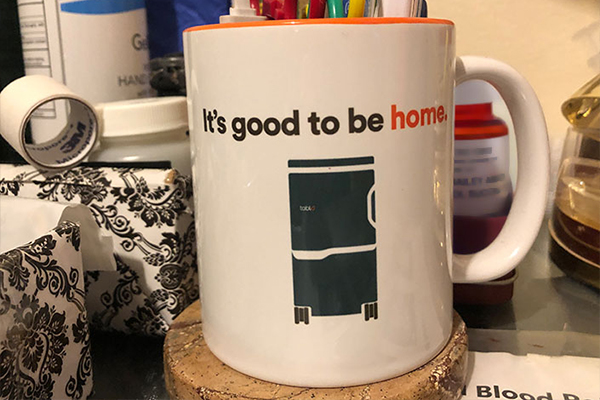How to Have a Happy Life Doing Hemodialysis at Home: 3 Tips from CKD Patient Norman
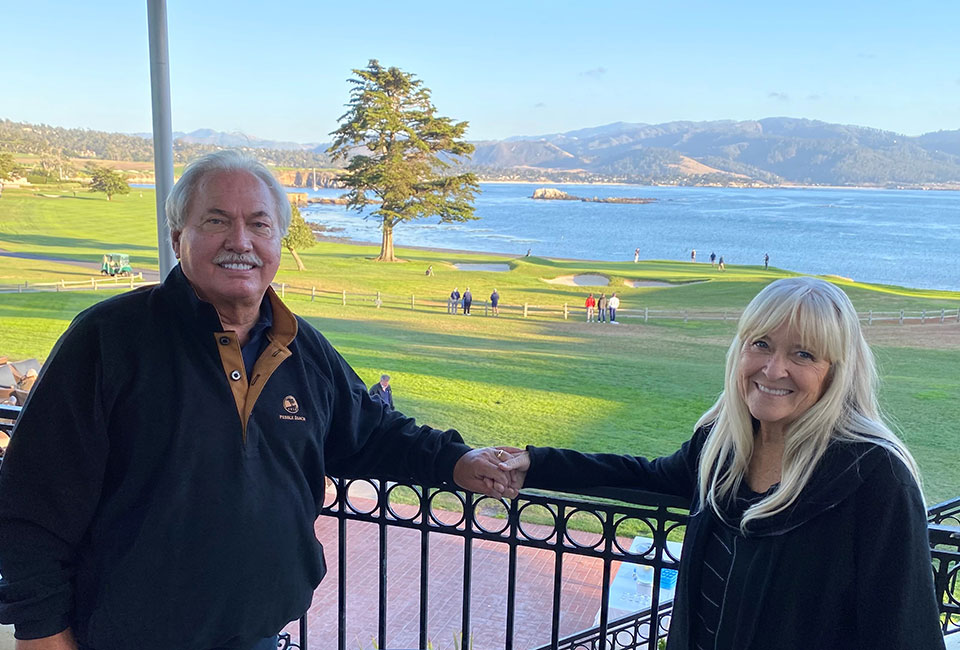
Summary
Norman and his wife Susie describe lessons learned on their path to enjoying autonomy while managing his hemodialysis at home—and how kidney disease quite possibly saved his life.
You might say that Norman, a retired dentist, and his wife Susie are living a fairytale life in Southern California after getting married at Disneyland 51 years ago. Today, even after battling bladder cancer, coronary artery disease and kidney failure, and experiences with hospital, in-center and home hemodialysis, Norman is feeling lucky and blessed, enjoying gardening, golf, dining out with friends and other activities.
As a chronic kidney disease (CKD) patient, how is he able to have such a positive attitude? Norman attributes it to these three lessons learned in the last year since starting hemodialysis at home:
- You don’t have to do dialysis at a clinic.
- Hemodialysis at home allows you to have autonomy and live life on your own terms.
- The Tablo® Hemodialysis System simplifies the dialysis experience.
From ER to Dialysis Chair Time
As with many kidney disease patients, Norman’s initial diagnosis took him by surprise. He had hypertension—a key risk factor for kidney disease—for many years, and even though he was on medication it wasn’t adequately controlled. He also had the stress of running his own dental practice for 40 years.
In November 2017, after returning to Southern California from a trip to Carmel, one of he and Susie’s favorite destinations, he started feeling like something wasn’t right. He didn’t feel well and had no energy. He managed to go back to his dental practice, but a few days later ended up in the emergency room. He found out that his kidneys were failing, and he needed acute dialysis. He spent six days in the hospital, and doctors told him his condition was nearing end-stage kidney disease (ESKD; also called end-stage renal disease, or ESRD).
“I received treatment for many hours through an emergency dialysis catheter in my chest, on what looked to me to be very antiquated equipment,” Norman says.
After getting out of the hospital, he spent a few months receiving dialysis treatments at a clinic. “My doctor said I would be on dialysis for the rest of my life, and I had an arteriovenous fistula [AVF] placed in my left arm. I was receiving treatment at the clinic three days a week, but it wasn’t ideal. There was no leeway, no forgiving with the scheduling, and I didn’t get a lot of rest because of how busy the clinic was and all the alarms going off,” he continues.
Norman even quit going to the center for a short time, as he wasn’t feeling any better, but ended up back in the hospital and then the dialysis clinic.
Kidney Disease as a Lifesaver
In retrospect, Norman says that his kidney disease probably saved his life. Following his initial hospital stay and dialysis for his newly diagnosed ESRD, he had gone home, but started experiencing abdominal pain. He ended up in the emergency room once again, where imaging tests spotted an aggressive form of cancer on his bladder. Once his kidney disease was stabilized, he underwent cancer surgery in 2018.
“Every once in a while, you get a little down about having kidney failure, but you know what? If not for that I probably wouldn’t be here. By the time you have symptoms with bladder cancer it can be too late,” he says.
A Switch to Hemodialysis at Home
In May of 2022, Norman and Susie decided they had enough of the dialysis clinic. After talking to Norman’s nephrologist, they made the decision to transition to hemodialysis at home. Norman had begun cannulating himself in-center, so he felt comfortable placing the needles himself at home. They started training on the NxStage machine.
From Susie’s point of view as a care partner, she felt confident she could help him with hemodialysis at home, but they found the machine to be challenging. “It wasn’t that easy for me to learn, we were in training for a long time,” she said. “The set up of the machine is quite complex, and I had to lift about 10 heavy bags of dialysate for each treatment. It was very awkward and stressful, but I did what I had to do and got used to it.”
While they were going through training, the nurses and Norman’s nephrologist told them about a new machine for hemodialysis at home that was going to be available in their area, called Tablo. They said it is easy to learn and use, with a touchscreen interface, and only required tap water and an electrical outlet.
“We said, that sounds great, and as soon as a machine became available, we absolutely wanted to do it,” says Norman.
From Stressful to Simplicity
They used NxStage at home for about six months, from May until October 2022. Once the Tablo system was available, Norman’s care team made the transition easy. “Everyone jumped through hoops to make this happen for us, and our Tablo training took only two weeks,” he says.
“Our nurse, and then everyone from Outset who was helping us get set up were amazing,” adds Susie. “If other patients could see all the people that surround you from Outset, everyone who is there for you as a patient when you really need it, at a challenging time in your life, that’s the number one tell-all.”
“With Tablo, there’s no comparison. It’s a whole different ball game.”
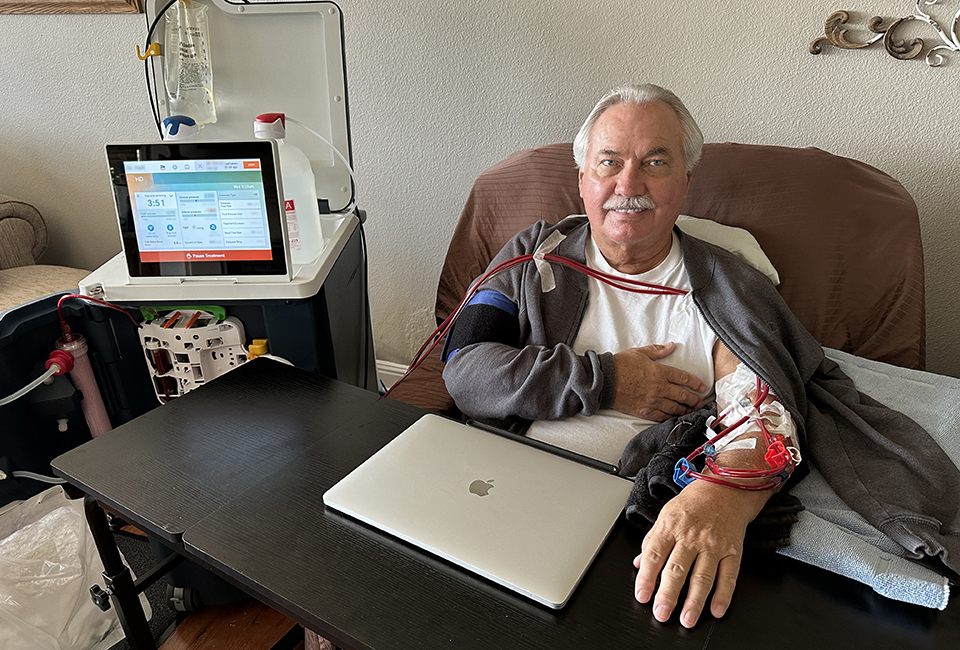
Norman’s takeaway from the experience with both hemodialysis at home treatments is that NxStage training takes much longer, and the manual, physical effort that is required to change out many heavy bags of dialysate for each treatment is difficult.
“With Tablo, there’s no comparison. It’s a whole different ball game,” he says.
Helping Hands
At home with Tablo, Susie assists Norman with placing his needles and prepares the machine for each treatment.
“You just look at the screen, and it literally tells you exactly what to do,” she says. “You can’t go on until you complete each step. I feel like I have helping hands guide me through the treatments. If an alarm does go off, it tells you exactly what’s happening on the screen and how to fix it. It was much more stressful trying to fix an alarm with NxStage.”
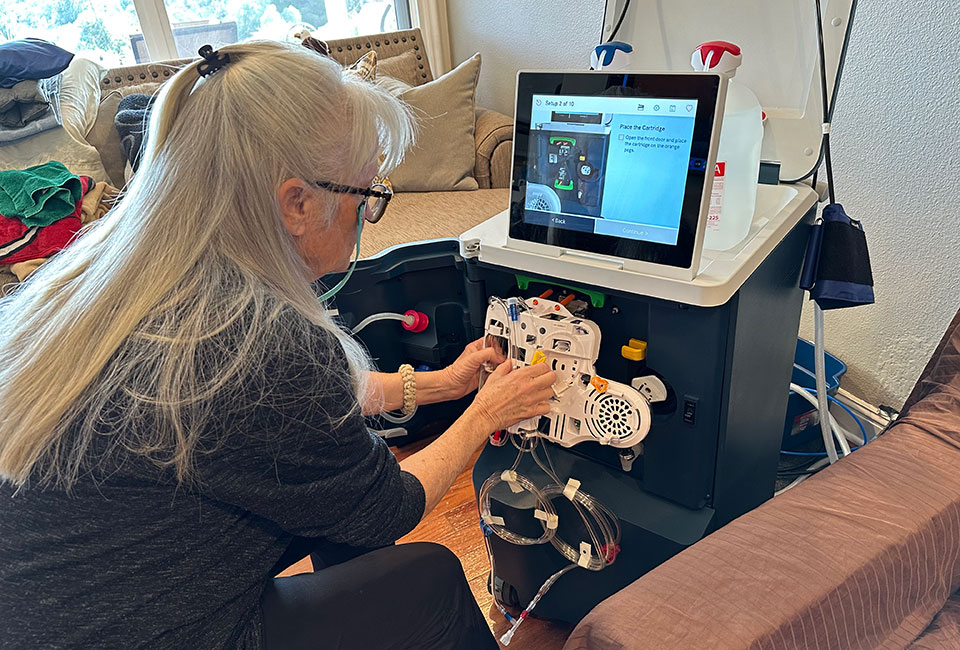
We Fit Home Hemodialysis Around Our Lives
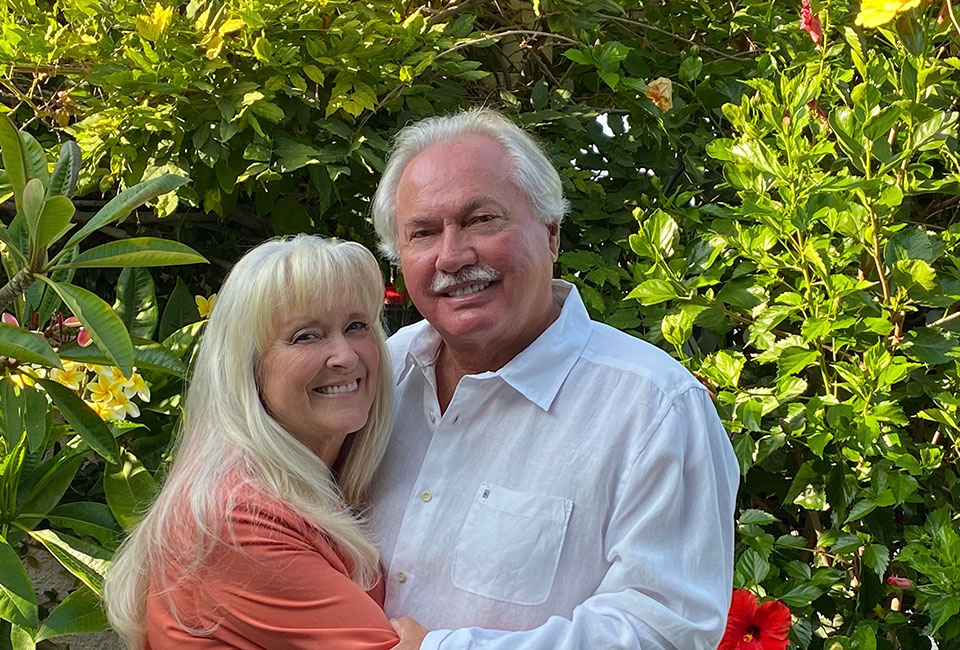
Norman and Susie sum up their Tablo experience over the last six months in one word: autonomy.
“We can do treatment whenever we want, on the days that we want, and switch it up if needed. We can bend and flex, meet my care team’s expectations and still get all of my treatments done,” says Norman.
“I enjoy spending time in nature, rather than sitting in the dialysis center.”
Being outdoors gardening in their yard is one of Norman and Susie’s favorite activities. Norman feels fortunate to be able to have the freedom and energy to enjoy this and other hobbies, such as golf and woodworking, since starting hemodialysis at home on Tablo.
“There’s nothing like being able to treat at home,” he says. “Before treatment usually on Monday, Wednesday and Friday mornings, I’m usually out working on our garden and flowers. I come in and get cleaned up, we do the treatment at about nine, and as soon as we’re done, I’m outside again. I love that the most. I enjoy spending time in nature, rather than sitting in the dialysis center. My life isn’t dictated by a dialysis center anymore. It is so wonderful to have the flexibility.”
While he’s treating for four hours, Norman typically listens to an audiobook, works on his laptop and then has his lunch. His meals follow a renal diet.
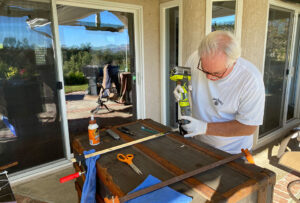
“For having end-stage renal disease, I’m a pretty happy camper,” he continues. “I would tell anybody starting on dialysis, do it at home, you don’t have to deal with the nonsense of a center’s schedule. It may seem a little daunting, but just take those first couple of steps and you will be so happy.”
Norman summarizes his experience on Tablo like this: “On my 73rd birthday I did my treatment, and two hours later we were celebrating at a nice steakhouse with our four dear friends. It’s a miracle.”
(Photo at the top of this page: Norman and Susie in Pebble Beach, CA, 2022)
Interested in home dialysis with Tablo?
The Tablo Hemodialysis System is available for use both in-center and at home, through your provider. We may use the information you enter to reach out to your provider or other providers in your area, to let them know that you are interested in Tablo. By filling out this form and providing us your information, you agree to our Privacy Policy.
* Tablo Hemodialysis System Disclaimer:
Results may vary. Keep in mind that all treatment and outcome results are specific to the individual patient. Please consult your physician for a complete list of indications, warnings, precautions, adverse events, clinical results, and other important medical information. It is important that you discuss the potential risks, complications, and benefits of this product with your doctor prior to receiving treatment, and that you rely on your physician’s judgment. Only your doctor can determine if home dialysis is suitable for you, and if you are a suitable candidate for treatment with the Tablo Hemodialysis System.
For safety and effectiveness information, indications for use, risks, cautions and warnings, please refer to the product labeling for the Tablo Hemodialysis System.

